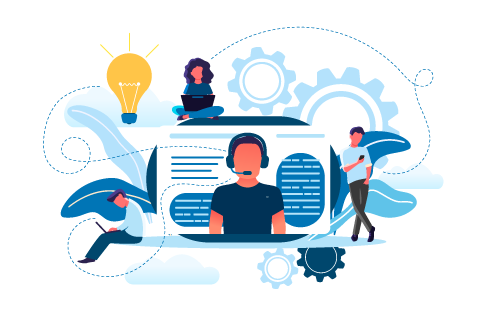Without doubt, technology has enabled organisations to make big strides in key aspects of customer service – and customers welcome many of these advancements.
In particular, customers have embraced apps and also enjoy being able to self-serve for transactional requirements like making bookings and purchases, browsing options and finding essential information. However, when it comes to more complex and personalised matters – and especially when there is a problem – most customers still want and expect to be able to talk to a real person and receive direct, human attention.
Not a uniform picture
These trends are explored in our latest research, “A Connected World? Ensuring the right blend of people and technology for customer service”. We find that 40% of customers have used at least six apps in the last six months, with banking, social media, shopping and groceries being the most popular types. Nearly three-quarters (73%) of the 1,000 consumers we surveyed described themselves as confident users of technology. However, there was perhaps some in-built bias here as it was an online survey – and 23% of respondents said they currently help a friend or family member to deal with an organisation online or digitally.
This is a reminder that there remain significant sections of organisations’ customer bases who are not well-adapted to the technology environment. This isn’t just a question of age, either. Some older customers love technology and embrace it wholeheartedly, for example. But people across many categories may have reasons for disliking digitally-based service – such as vulnerable customers with a physical or mental disability, and those who are wary of data privacy and confidentiality. Indeed, over half of customers that we surveyed are relatively uncomfortable about their data being used to provide personalised service experiences.
Service benefits
Nevertheless, technology is generally helping organisations improve and sharpen their service proposition. Many are achieving significant benefits in using technology to improve workflow processes, analytics to enable better decision-making and integration of data. Some of the most impactful applications of technology relate to empowering employees to deliver better service experiences: real-time prompts based on analytics of similar customer interactions, increased visibility of relevant data, and analysis of interactions with customers to identify training needs. One of the most striking examples of employees and technology combining to deliver service is the role of customer service advisers as “digital coaches” – helping customers to use digital channels, stepping in where customers are experiencing a problem, but doing this with the customer and, therefore, improving customer knowledge and capability as well.
Chatbot frustrations
Many businesses are also investing in artificial intelligence to underpin digital channels, notably in the form of chatbots. The aim is to achieve a “win-win” of commercial and customer experience objectives by reducing the number of failed customer contacts, improving speed and accuracy and concentrating employee resource on complex issues. However, our research finds that chatbots interactions are likely to be amongst the least satisfying and most annoying experiences for customers – frequently because they take customers on a ‘circular loop’ and don’t provide real solutions.
It’s clear that successful deployment of chatbots requires excellent design and structuring of customer journeys, continual testing, transparency about use of an AI-enabled agent and quick human intervention when it is needed. There’s little doubt that we need the technology to develop further before it’s truly capable of handling real customer issues beyond the simplest and most transactional matters.
Blended is best
In short, for all its benefits, we shouldn’t over-estimate what technology is currently able to deliver in a service context. The best service approaches will see a blend of the technological and the human – working in combination to support and complement each other. When it’s done well, it significantly enhances the customer experience and is a win on both sides. But if a business pushes too hard down the technology route – usually as a perceived cost saving measure – they may just be storing up service problems for the future.
With the cost of living crisis deepening and a recession looming, I am concerned that more organisations may look for cost efficiencies by increasing their use of technology and automated service, at the expense of their human customer service teams. This would be a mistake. Firstly, because tuning technology for really complex issues can require significant investment in itself. But more fundamentally because, if Covid taught us anything, it was the importance of human support and interaction through difficult times.
Don’t delude yourself that technology can be a panacea for all service needs. Keep close to your customers by giving them a complete range of channels and choices over how they want to interact – the organisations that maintain service in all its forms through the difficult times will emerge the strongest and fittest on the other side.



